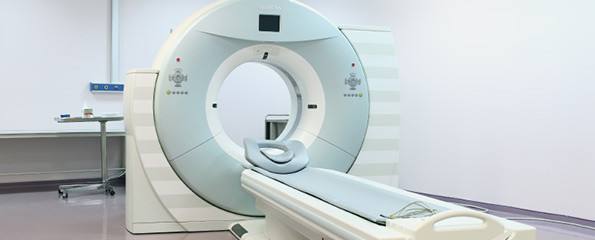New materials promise safer, faster MRI scans
Australian National University scientists are part of a group that has found a way to increase the resolution of MRI scanners, while at the same time making the procedure quicker and safer for the patient.
The international group of researchers placed ultrathin metallic resonators under the patient inside an MRI machine and increased the efficiency and quality of the scanning process.
“This research may evolve into a new and very practical device that enhances MRI imaging and scanning time,” said Professor Yuri Kivshar, from the Australian National University (ANU).
“It does not require any intervention into the hardware of the MRI scanner, but rather is an inexpensive add-on device that can be used with any existing MRI scanner,” said Professor Kivshar, head of the Nonlinear Physics Centre in the ANU Research School of Physics and Engineering.
Magnetic resonance imaging (MRI) is one of the most sensitive modern diagnostic tools and can be used for imaging cancers, spinal areas or brain function.
Because MRI uses magnetic fields instead of the ionizing radiation in X-rays and CT scans it is much less damaging to the patient.
However new high-field and ultra-high-field MRI scanners can heat the tissue of patients due to an increase of the radiofrequency energy absorption.
The team found the resonators, artificial materials with nanoscale periodic structures, suppressed the electric field, which is responsible for tissue heating.
In their publication in Advanced Materials, the team reported that the resonators, also known as metamaterials, were able to spatially redistribute the electromagnetic near fields and double the signal-to-noise ratio.
The improvement will enable higher-resolution images to be obtained in the same time.
Alternatively scans with the same resolution as in current MRI scanners could be produced more quickly, reducing discomfort for patients, who need to lie motionless for long periods, and cutting hospital wait times.
The new technology is currently being patented and integrated into the production of commercial MRI scanners in collaboration with the medical company Mediwise.
However a simpler approach may be special smart clothing for MRI scanning, said Alexey Slobozhanyuk, first author of the study and researcher at the International Laboratory of Applied Radiophysics at ITMO University.
“Stripes of metamaterial could be sewn into clothes, which would lead to higher resolution MRI images,” he said.
The team included scientists from ITMO University, Australian National University, Ioffe Physical-Technical Institute, University Medical Center Utrecht and Institute of Experimental Medicine RAMS.
(Source: Australian National University, Advanced Materials)
Dates
Tags
Created by:

 Login
Login














